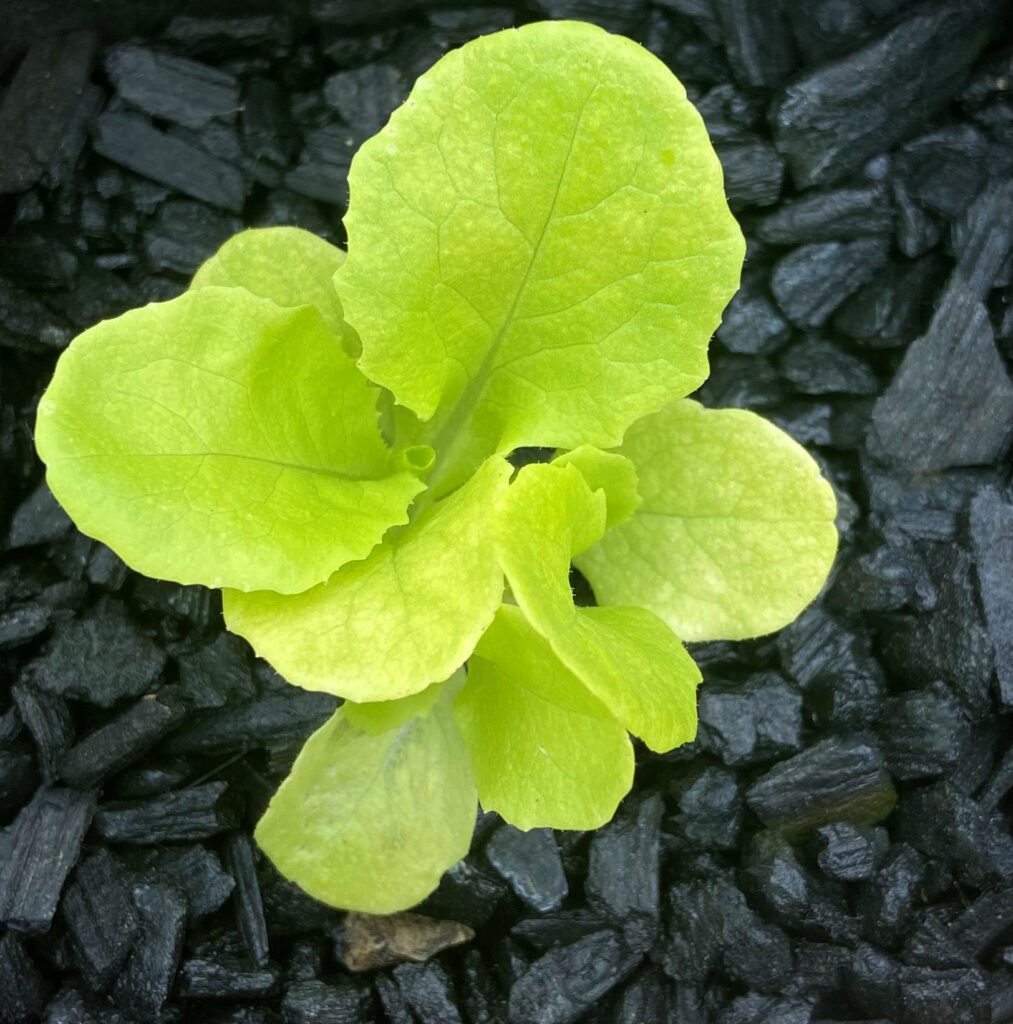Biochar is made from pyrolysed organic matter with a high carbon content, that is very stable over time. The properties give it great potential for use in agriculture and construction for its unique properties and carbon storage value.

This article explains what biochar is and how it is produced. It also highlights some of the numerous applications in agriculture, permaculture and carbon storage.
What is biochar?
At the end of the twentieth century, biochar was discovered in some Amazonian soils and was later named “Terra Preta” because of its black colour. These soils are particularly rich and productive compared to usual Amazonian soils, which are very sandy and retain few nutrients. The deposits of biochar in these soils has been present for a very long time and can be up to 2500 years old. The debate around the origin of these deposits continues, whether they were deposited by deliberate human activity or via natural forest process such as forest fires. Nevertheless, the agronomic effects of these sols is well established.
For many Biochar has been ignored for too long and biochar use is now being rediscovered and shows potential for innovative applications, responding to specific societal and environmental issues. Beyond agronomic properties, various other applications stand out, such as pollution treatment, carbon storage and as a construction material.
Biochar is produced from pyrolysed organic matter with a high carbon concentration. Pyrolysis allows the recovery of energy of biomass and also the production of a solid product. This energy is clean and renewable if biomass is produced sustainably. Carbon Centric is produced at an industrial scale which means it has very consistent properties, perfect for technical applications.
Biochar production
Is the result of the pyrolysis reaction where wood is heated to a high temperature for a long time without oxygen. This reaction modifies the composition of organic matter, after which it then becomes stable and concentrated in carbon, giving it unique physicochemical properties. Biochar use in a wide field of application is thanks to these properties.
Carbon Centric is supplied from pyrolysis experts who have mastered the process which ensures great Biochar consistency and quality. Thanks to the transparency of our suppliers supply chain we can ensure sustainable wood has been used to produce out Biochar and that there is no risk of deforestation. The production process of our partners ensure low carbon emissions and also better organic matter yields, hence avoiding resource waste. Carbon Centric Biochar is certified EBC (European Biochar Certificate) by Bio Inspecta.
Biochar use
Agronomic biochar use
During pyrolysis, the wood structure is transformed into a very porous one. Its matrix is mainly composed of stable carbon. Biochar applications are various. In agronomy, it has water retention properties thanks to the highly porous nature of the Biochar. A common misconception is that the specific surface area of Biochar is responsible for the water holding capacity. This is not the case Biochar water holding capacity is defined by the overall volumetric porosity. Biochar with pores that are of a relatively medium size will also release water more efficiently than those with smaller pores. Therefore a very high specific surface area and small pore size is not associated with the water holding capacity of Biochar. Water retention is essential not only to provide water to plants but also to microorganisms. Specifically by increasing the amount of water in the aerobic layer of soil the productivity of nitrogen fixing bacteria can be increased.
Biochar provides habitat to microorganisms such as mycorrhizae which live in symbiosis with plants. The porous matrix surface of the biochar has negative electrical charges, which result in the exchange of positively charged nutrient cations. However, these cations are not so strongly linked as to reduce the absorption of these nutrients by plants.
Before using biochar, pre-treatment is necessary to use it at its maximum potential. When mixed with organic fertiliser, it absorbs nutrients and microorganisms present in the fertiliser that subsequently prevents these nutrients from being washed out once applied.
Biochar use in construction
When used in construction materials, biochar allows for the replacement of other non-sustainable materials with a biologically sourced material. Biochar use allows the creation of carbon sinks in the building. It is then possible to build roads or buildings which are carbon neutral when biochar is permanently incorporated into asphalt or concrete.
Numerous studies have shown that biochar can be added to high-resistance concrete to create permanent carbon sinks. If light and insulating concretes are necessary, much larger quantities can be added. When added to the construction, it can also improve the building’s insulating properties (acoustic and thermal).

Carbon storage
Biochar application, such as in agriculture or construction creates carbon sinks. These carbon sinks help to reduce the carbon footprint of the product which incorporates Biochar. A carbon sink is a place where carbon is stored to prevent it from being released into the atmosphere as CO2, which is a greenhouse gas. Carbon sinks have a true environmental impact as they allow, at their scale, to reduce the quantity of CO2 in the atmosphere. Although the priority is to reduce emissions, according to the IPCC carbon sink creation will be needed to reach the Paris climate goals.
Carbon storage via biochar is an especially well performing technology. Not only do they allow carbon storage in a safe way for a long period, but also the reduction of the total quantity of CO2 present in the atmosphere. Contrary to other carbon compensation projects, such as tree plantation and peat restoration, the use of biochar allows for the permanent storage of carbon in the soil. Trees can be cut or burnt and the carbon stored win them released. In contrast, Biochar carbon sinks are not subject to these risk and confidence in them is much higher. However as mentioned previously, carbon storage by biochar will not be sufficient by itself. We need to take all possible measures to protect our planet starting with emissions reductions.
Biochar is used in numerous industries. It is remarkably useful for carbon storage.
A sustainable supply
The supply of raw materials for biomass-based products such as biochar needs to be done sustainably, with respect to the environment and humans. Carbon Centric Biochar is made from timber from French forests, which are sustainably managed. We ensure that no tree comes from a forest subject to deforestation or non-sustainable management.
Our partners use wood from forest management practices and sawmill waste. In forest management, some trees are cut to reduce the density of trees, allowing bigger and healthier trees to grow. Also, diseased trees are also removed to reduce the propagation of disease and to maintain the health of the forest. Sawmill and barrel making waste wood is also a very significant part of our supply chain. By using these co-products we ensure that all availible resources are used in the most efficient ways possible. By using this wood, the local forest economy is supported and the jobs, livelihoods and heritage of local communities.
The distance between the pyrolysis plants and wood sources is very important. It ensures that the timber used comes from local forests and that excessive emissions are not created via the transport of wood over long distances. The proximity of our suppliers is accounted for in the carbon storage value of Carbon Centric Biochar. It also means that the whole supply chain of the product can be tracked until its source to guarantee that no timber comes from forests threatened by deforestation. Thanks to this local supply chain, our suppliers can also guarantee the respect of human rights, health and safety of workers.
How to buy biochar in Europe?
Carbon Centric biochar can be bought by contacting our team or by filling out the form on our website. We can also provide you with some advice on how biochar use can benefit you. We can also provide you with different qualities of biochar suited to your needs. For agriculture and construction, which need great quantities, we can sell biochar in bulk.
Written by Thomas Harcourt
Thomas is a biochemist which has 5 years of experience within the industry. He finished his Phd in plant biochemistry at the University of Sheffield in 2015.

Sources
1. Suarez-Riera, D., Restuccia, L. & Ferro, G. A. The use of Biochar to reduce the carbon footprint of cement-based. Procedia Struct. Integr. 26, 199–210 (2020).


